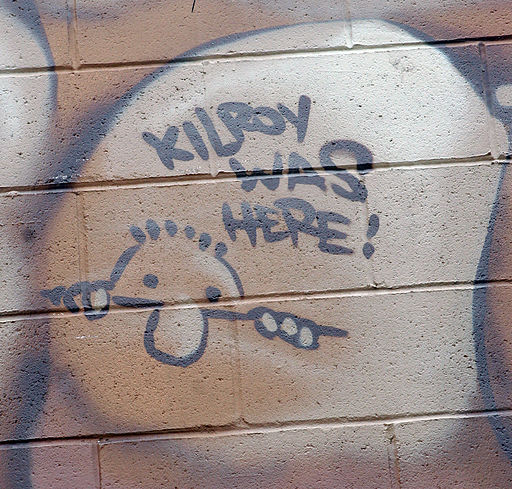We Were Here

In Kansas City, Missouri, a 2008 rendition of the graffiti made famous everywhere during World War II by American servicemen. Photo by Marshall Astor.
John Cleese as the Centurion and Graham Chapman as Brian in the 1979 satirical film Monty Python’s Life of Brian.
Tagging, which is marking or painting of initials, nicknames, or symbols, and is often used to mark territory, is not a particularly enjoyable or meaningful form of graffiti to anyone but the marker and others who need to interpret the signs. They rarely exhibit any wit, and are usually straightforward signs meant for specific groups instead of the larger society, hence their often cryptic appearance to those not in the know. The signs say, among other things, “Keep out”, “This is our territory”, or “I am here”. The humorist Jean Shepherd, in a video essay about roadside features in New Jersey, speculated about the confusion of future archaeologists as they attempt to decipher the graffiti of our times, attaching to it perhaps more importance than it warrants. The entire television special is a treat, featuring Mr. Shepherd musing with philosophical delight about what constitutes art as he observes all the commercial kitsch he finds along a New Jersey highway. All our artifacts and graffiti will be gone in a millennium, of course, crumbled into disconnected bits, but for now they say “I am here”, and “We were here”.
— Vita 
